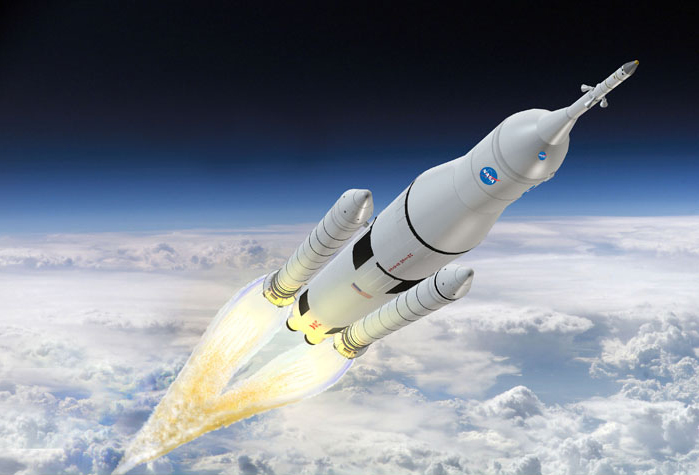
The Obama administration has outlined its strategy for maintaining what it describes as the United States' global leadership role in spaceflight and exploration.
The White House's new national space transportation policy, released Thursday (Nov. 21), reinforces several previously stated administration priorities. It calls on federal agencies to continue supporting the development of private American spaceships to carry astronauts to and from low-Earth orbit, for example, and directs NASA to keep working on a heavy-lift rocket to send people much farther afield.
This plan makes a lot of sense for NASA, allowing the agency to put its limited financial resources to the best possible use, NASA chief Charles Bolden said. [NASA's Space Exploration and Tech Goals for 2014 (Photos)]
"The development of a commercial space sector for low-Earth orbit transportation is freeing NASA to develop a heavy-lift launch capability to travel further into space than ever before," Bolden wrote in a blog post about the new policy Thursday.
"NASA has already made steady progress on the development of the next-generation heavy-lift launch vehicle, the Space Launch System (SLS)," he added. "NASA is also well on its way to developing the Orion crew capsule, which will take astronauts further into deep space than humans have ever explored."
The maiden Orion test flight is slated for next year, while the SLS is scheduled to get off the ground for the first time in late 2017. NASA wants the duo to be flying astronauts together by 2021.
That would allow the space agency to meet two objectives President Barack Obama laid out for NASA in his 2010 National Space Policy — to get astronauts to a near-Earth asteroid by 2025, then on to the vicinity of Mars by the mid-2030s.
Get the Space.com Newsletter
Breaking space news, the latest updates on rocket launches, skywatching events and more!
While it works on this deep-space transportation system, NASA is also encouraging the growth of an emerging private spaceflight industry. Through its commercial crew program, the agency has most recently funded the development of three private manned spaceships — those being built by SpaceX, Boeing and Sierra Nevada Corp. — and hopes at least one of them is up and running by 2017.
Leaders in the commercial spaceflight industry were pleased to see continued support for this effort in the new policy.
"We appreciate this clear delineation of policy in favor of supporting American industry, creating the most effective and efficient space program possible and ensuring the nation retains its leadership and competitiveness in space," Michael Lopez-Alegria, president of Commercial Spaceflight Federation and a former NASA astronaut, said in a statement. "We are grateful for the Obama Administration’s support for the commercial space sector and look forward to many joint successes to come."
The newly released space transportation policy, which replaces a version announced in 2004, is a wide-ranging document touching on many different aspects of American space infrastructure.
It encourages international collaboration when beneficial and practicable, for example, and also instructs government agencies to support research and development into advanced propulsion technologies. You can read the entire document here: http://www.whitehouse.gov/sites/default/files/microsites/ostp/national_space_transportation_policy_11212013.pdf
Follow Mike Wall on Twitter @michaeldwall and Google+. Follow us @Spacedotcom, Facebook or Google+. Originally published on SPACE.com.
Join our Space Forums to keep talking space on the latest missions, night sky and more! And if you have a news tip, correction or comment, let us know at: community@space.com.

Michael Wall is a Senior Space Writer with Space.com and joined the team in 2010. He primarily covers exoplanets, spaceflight and military space, but has been known to dabble in the space art beat. His book about the search for alien life, "Out There," was published on Nov. 13, 2018. Before becoming a science writer, Michael worked as a herpetologist and wildlife biologist. He has a Ph.D. in evolutionary biology from the University of Sydney, Australia, a bachelor's degree from the University of Arizona, and a graduate certificate in science writing from the University of California, Santa Cruz. To find out what his latest project is, you can follow Michael on Twitter.









